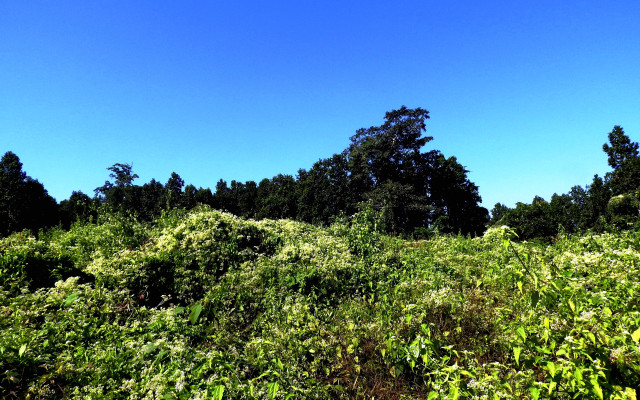Managing invasive species in community forests in Nepal

Invasive Alien Plant Species (IAPS) are growing burden in natural and managed ecosystems across scales and their threats to biodiversity are increasing with global environmental changes. Many of Nepal´s community forests are affected by IAPS; Mikania micrantha, Chromolaena odorata and Lantana camera are among the most troublesome, all three being among the world’s 100 worst invasive species. IAPS are degrading forest, hindering biodiversity, compromising ecosystem services and affecting forest dependent people’s access to forest resources. The IKI Small Grant project aims to restore forest and conserve biodiversity through invasive species management and natural regeneration promotion and protection in community forests degraded by IAPS. The project will adopt a participatory action research approach and will work with local communities to manage invasive species which links forest restoration with sustainable agriculture through biomass management of IAPS. The project further works to strengthen capacity of CFUGs and forest technicians for effective management of IAPS in forests through training and knowledge management.
INITIAL SITUATION
Five natural community forests in the Chure landscape in Chitwan, Nepal are seriously affected by invasive alien plant species (IAPS). They have supressed tree regeneration and homogenised forest vegetation and degraded habitat quality of wildlife. There have been attempts to control IAPS and manage their biomass but they are successful as these attempts are discrete and not within a broader framework of forest restoration. In addition IAPS control activities are not informed by ecological attributes of the invading species.
TARGET GROUP
The project primarily works with community forest user groups, smallholder farmers, forest dependent people and local residents; they are also primary beneficiaries of the project. They benefit directly and indirectly from restored forest, improved ecosystem services and enhanced use of compost. Additionally, local communities and forest technicians will be benefited from capacity building training on forest restoration and invasive species biomass management
VIDEOS FROM THE PROJECT
APPROACH AND ACTIVITIES
The project aims to restore forest ecosystem, conserve biodiversity, and promote sustainable farming through invasive species management in community forests along the Chure landscape. The project promotes natural regeneration, plants native seedlings in degraded areas, identifies local biodiversity hotspots and prioritizes rare and threatened species for conservation. Project will adopt a participatory approach; collaborate with CFUG, DFO and local governments, agricultural groups and farmers. Project will adopt ecosystem based adaptation and promote sustainable agriculture.
Recognising the central role of CFUGs in managing the forest, the project will enhance their technical and management capacity through training, workshops and participatory assessment of biodiversity. Project will also facilitate in strengthening collaboration among stakeholders to tackle the threats posed by IAPS. The project will organise campaigns and mobilise local communities to remove invasive species from the forest. Invasive species removal in degraded forest patches will be followed by natural regeneration protection and plantation of native seedlings in five community forests in active participation of local people.
The project works to reduce the use of chemical fertilizer by the promotion of compost manure prepared from invasive species biomass. The compost production will use both local and expert knowledge and will rely on local materials. This is being achieved by trainings for farmers, establishing compost production facilities in five community forests, and enhancing the use of compost reducing the widespread chemical fertilizer.
The project seeks to integrate invasive species management and biodiversity conservation in community forest management policies and plans. To do so, the project organizes trainings for the community forest leaders and government forestry staff on biodiversity integration in community forests. Technical services are provided for the revision of the operational plan in five community forest user groups which is followed by facilitating the revision of the community forests operational plan to accommodate biodiversity and invasive species management. Good practices on biodiversity conservation in CF will be scaled out through training and dissemination of communication materials.
LATEST PROJECT HIGHLIGHTS AND IMPACTS
- Invasive species assessment
- Removal of >720 metric tonnes of invasive species biomass from 110 hectare of degraded forest
- Trainings, workshops and events on managing invasive species for community forest user groups and local stakeholders
- 2 publications on invasive species (specifications on Lantana camera)
ABOUT THE ORGANISATION
Forest Action Nepal is a learning oriented, not-for-profit organization working in the areas of Forestry, Agriculture and Climate Change. It was founded in 2000 and aims to achieve productive, sustainable and equitable natural resource management through action research, policy dialogue and stakeholder engagement at local, regional and national level.
